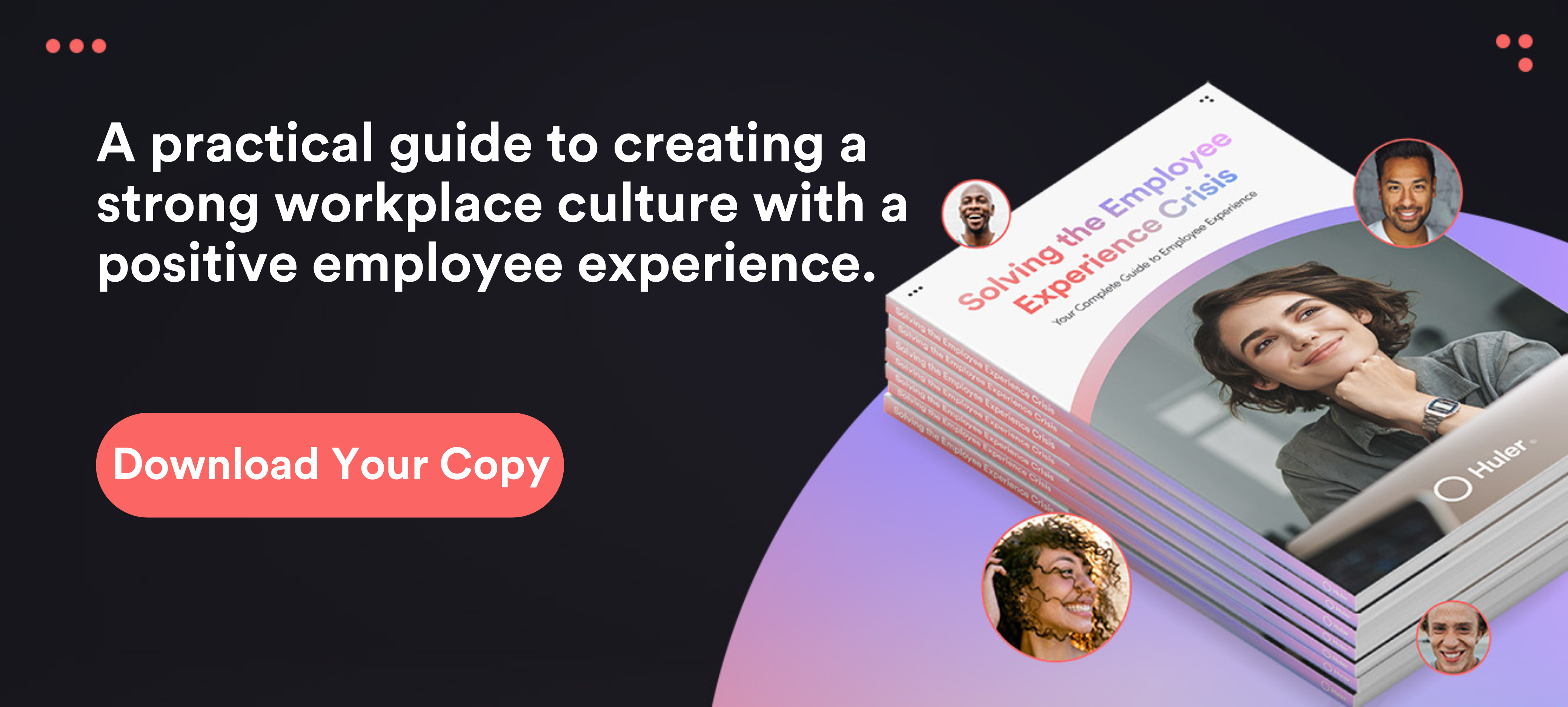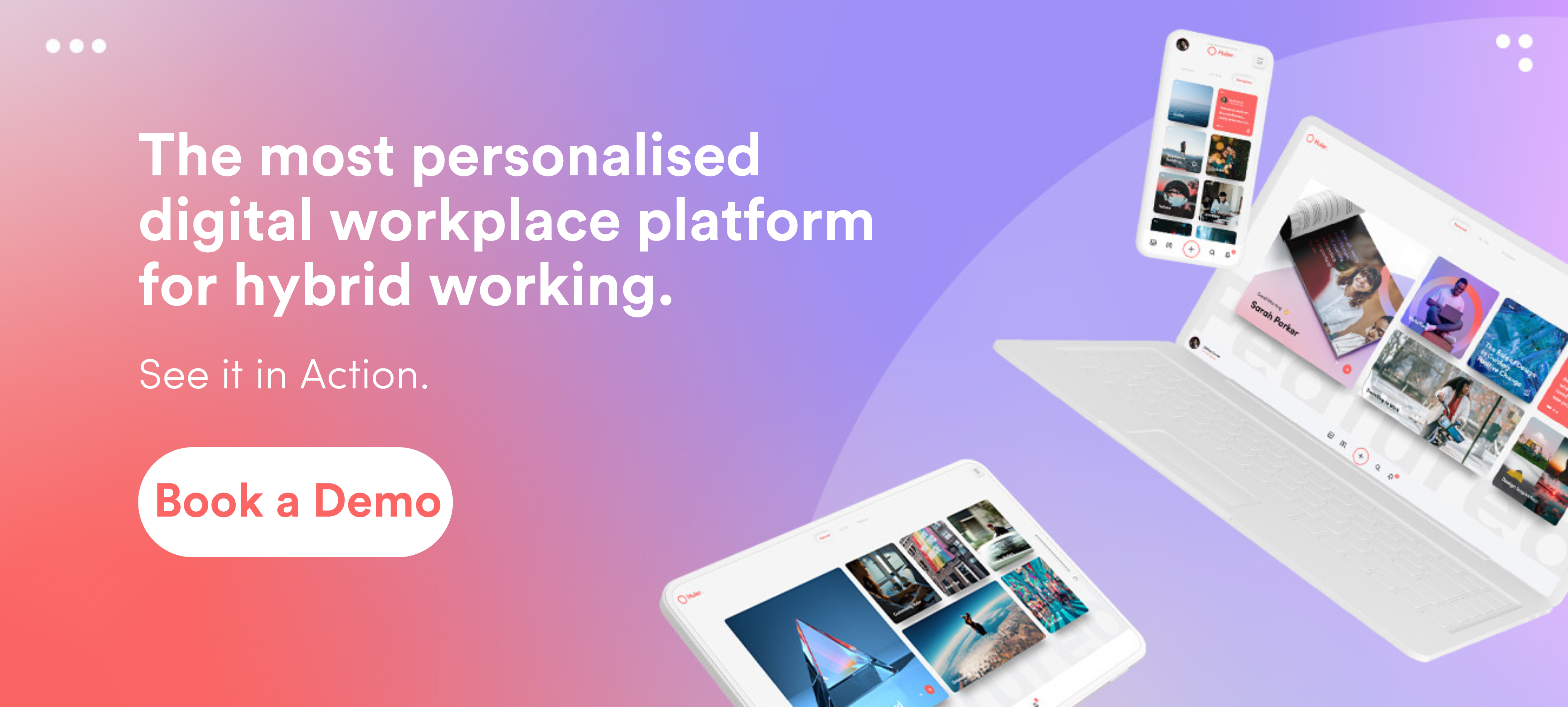Intranets and digital workplaces. They’re terms that are sometimes used interchangeably. Throw in ‘employee experience platform’ and ‘modern intranet’ and you might be even more confused.
So what are the differences between these new digital tools? Is an intranet the same as a digital workplace? Does one replace the other? Or do they complement each other? And, most importantly, which is the best solution for your business?
Let’s get started answering those questions.
Intranet vs Digital Workplace
What is an intranet? Is it the same as a digital workplace platform? The answer is: no. A digital workplace is not the same as an intranet.
A digital workplace is your overall digital working environment. It’s the environment which contains all your business’s communication and collaboration tools — including your intranet. Virtually every company today has some form of digital workplace; at its simplest, it’s a collection of tools and content.
An intranet, on the other hand, sits inside your digital workplace. Traditional intranets sprung up in the nineties, mainly acting as repositories for a business’s information which can be accessed internally.
Modern intranets, however, go beyond this: they bring together much of your business’s information in an accessible way to help improve internal communication, collaboration and productivity — while boosting the employee experience. In a world where employees work remotely and in hybrid patterns, they’re an important part of a digital workplace.
Suggested Reading: For more detail on traditional and modern intranets and what they do, read our guide — What is an Intranet? | Your Questions Answered
Employee Experience Platform v Intranet
Intranets are consistently offered up as ‘one-stop shops’ for news, content, and services. But can we say that is still true when employees use more software than ever in their working days?
While the notion of having a one-stop shop for everything ranging from internal communications to HR management is appealing, it is challenging to achieve and maintain. Inevitably, over time, content and systems get spread out. Vendors and providers change, and employees are once more led away from the intranet into a maze of information.
Instead of attempting to corral everything from transactions to content publishing in one place, employee experience platforms act as an additional layer that sits on top of all those disparate solutions and makes sense of them in a way that’s engaging and intuitive for users.
Employee experience platforms don’t require the heavy lifting involved in migrating to a traditional intranet platform. Instead, they take all of your business’s content and information in orbit and organise it into recognisable building blocks, which can be personalised at both an individual and organisational level.
Suggested Reading: For more information on EXPs, read our blog — What is an Employee Experience Platform?
In short, EXPs are a world away from a traditional intranet, but closer to a modern intranet. While a modern intranet is an important part of a digital workplace, for organiastions that want to prioritise employee experience and engagement – an EXP is crucial.
Settling The Differences
A digital workplace comprises all the tools employees use to get work done, including instant messaging apps, video conferencing tools, social media, and workflows. Typically, all of these tools can be accessed from anywhere, providing the employee has an internet-enabled device.
An employee experience platform, at its core, is a portal that connects employees to their ecosystem of enterprise tools, apps, and content. It doesn’t replace a modern intranet. Instead, it exists alongside it, providing users easy access to everything they need in a personalisable interface.
While traditional intranets are typically static, employee experience platforms are dynamic and flexible. They allow employees to focus on what is important at the right time in their working day. Because they are mobile-first and personalised by users, employees can tap into the information they need in real-time, anytime, and anywhere.
|
Digital workplace |
Employee Experience Platform |
Modern Intranet |
Traditional Intranet |
|
|
Purpose |
– An overall digital working environment, bringing all your tools together |
– Boost employee experience by combining all workplace tools seamlessly |
– Internal communication tool, bringing together information and workplace tools |
– Store and provide access to information |
|
Communication and collaboration |
– The umbrella under which all communication tools sit – Ensures consistency of communication between physical and digital workplace |
– Hosts all communication tools – Allows for switching between specific communication apps – In-platform notification tools |
– Hosts most communication tools – Enables easy switching between communication tools, i.e. Slack, Asana |
– Limited communication or collaboration capabilities – Focus on storing, viewing and retrieving information |
|
Customisation |
– Choose and customise tools based on business need |
– Employer and employee customisation to improve employee experience |
– Some customisation capabilities to improve employee experience |
– No customisation available |
|
Knowledge |
– Stores all business knowledge and information, with ability to share and add more |
– Stores all business knowledge and information – Enables easy knowledge sharing through customisable features |
– Stores most business knowledge and information – Allows some knowledge sharing |
– Stores business knowledge, sometimes in hard-to-understand ways – Limited knowledge sharing capabilities |
Creating A Digital Workplace That Works
A digital workplace that contains everything your employees need is a digital workplace employees will enjoy.
Modern digital workplaces are about boosting employee experience and employee engagement. And a workplace that contains an EXP is one that helps boost your company culture and your employees’ connection with their work and their colleagues.
Building a digital workplace for a modern business that brings together all employees requires an employee experience platform, like HulerHub. They are the threads that connect the dots across a distributed workforce.
Book a HulerHub demo today to discover how our employee experience platform can work with your existing intranet, as well as the rest of your digital workplace, to provide consistent, unified, engaging experiences for your people, wherever they work from.
FAQs
Intranet v digital workplace
An intranet is an internal network for storing and sharing information. Traditional intranets prioritise information storing. Modern intranets, on the other hand, include customisable, seamless collaboration and communication capabilities to provide a good employee experience. A digital workplace is a company’s overall digital working environment. It hosts all the business’s communication, collaboration, productivity and wellbeing tools, including an intranet.
What is an intranet?
An intranet is an internal private network used to store and share information. Traditional intranets focused on storing company information, with less focus on employee experience. Modern intranets prioritise employee experience, bringing together information, communication and content in one place to boost collaboration and productivity and the employee experience.
What is a digital workplace?
A digital workplace is a company’s overall digital working environment. It hosts all the business’s communication, collaboration, productivity and wellbeing tools, including an intranet.
What is an employee experience platform?
An employee experience platform is software that gives organisations better control over how employees perceive, experience and interact with work technology and touchpoints in the employee journey, with no need to replace or change their current set up.







